The B-52 was designed in a hotel room over a weekend (and will probably fly for 100 years)
- By Alex Hollings
Share This Article
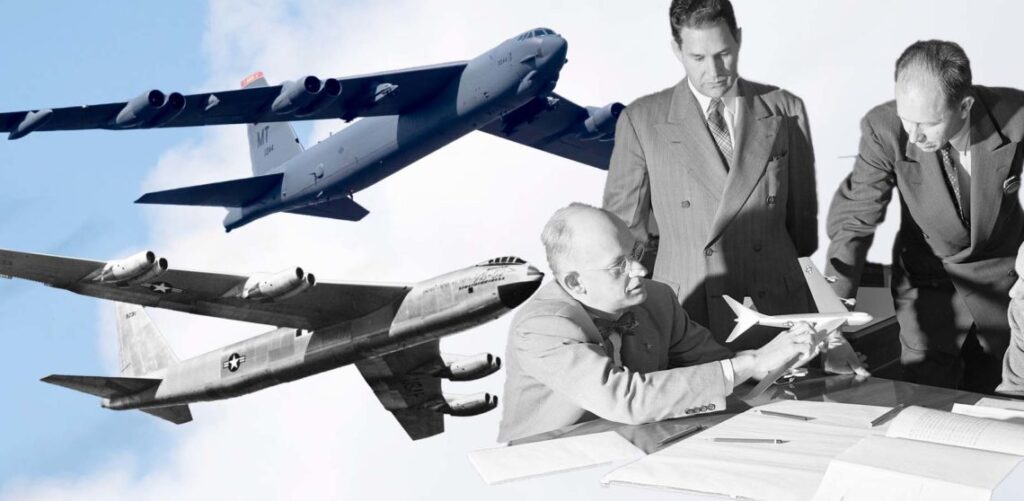
America’s legendary B-52 Stratofortress first took to the skies more than 70 years ago and will likely remain in service beyond its century mark. In fact, the B-52 is now slated to continue flying long after much newer bombers, the B-1B Lancer and B-2 Spirit respectively, have already been sent out to pasture.
But what may be most incredible about this long-lasting and broadly capable platform is that the aircraft itself, often referred to as the BUFF (Big Ugly Fat Fellow), was actually designed over the span of a single weekend by a small group of Boeing engineers stuffed into one hotel room in Dayton, Ohio.
The B-52 started flying when America was still relying on P-51 Mustangs
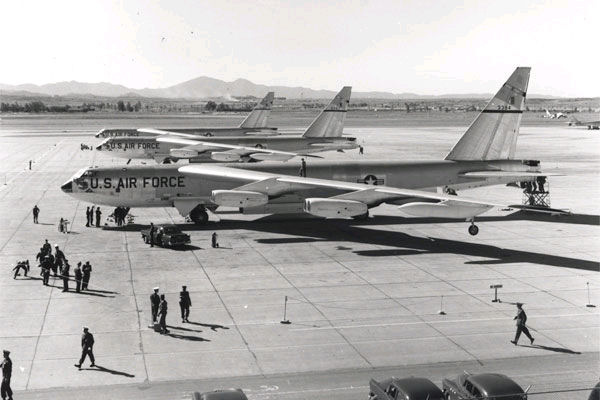
The B-52’s prolific service career spans not only decades and conflicts, but eras of aviation. The aircraft was born at a time when the very concept of combat aviation was being reborn into the jet age.
When the B-52 first took flight in 1952, the F-51 Mustang – an updated iteration of the World War II P-51 – was still among the primary fighter-bombers in service over the Korean War. By the time the mighty BUFF entered service in 1955, however, the supersonic jet-powered F-100 Super Sabre was already in operation.
But in this era of rapid change, the B-52’s swept-wing design and jet propulsion quickly proved the platform was not only capable of keeping pace with the times, it quickly began raising the bar for what was considered feasible for a bomber platform.
One year after entering service, a B-52 conducted the world’s first air-drop of a thermo-nuclear weapon over the Bikini Atoll, proving the aircraft was a bona fide nuclear powerhouse. The following year, it proved it had global reach when three B-52s conducted a non-stop round-the-world flight in just 45 hours and 19 minutes, thanks to in-flight refueling. The next year, in 1958, multiple B-52s would set world-speed records. Soon, a number of other records would fall to B-52 crews, including multiple new records for distances flown without refueling.
Spanning wars and altitudes
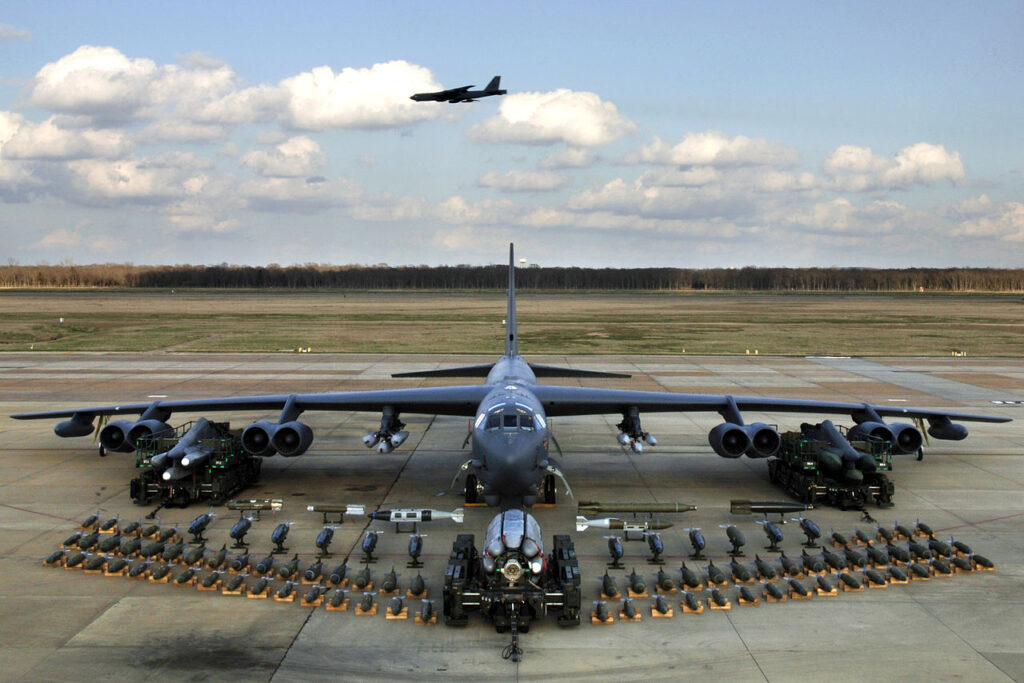
After Gary Powers’ U-2 was shot down in 1960, the B-52’s preferred approach to bombing from 50,000 feet no longer seemed feasible. Rather than retire their new bomber, however, the Air Force quickly assessed that the aircraft’s flexible design could transition into a low-flying bomber deploying munitions from as low as just 400 feet or lower, below where radar could track.
The B-52 played a significant role in the Vietnam War, particularly during Operation Linebacker II which saw 729 B-52 sorties drop more than 15,000 tons of bombs on Hanoi and other targets. The B-52 was even credited with two air-to-air kills during Vietnam, both against supersonic MiG-21s.
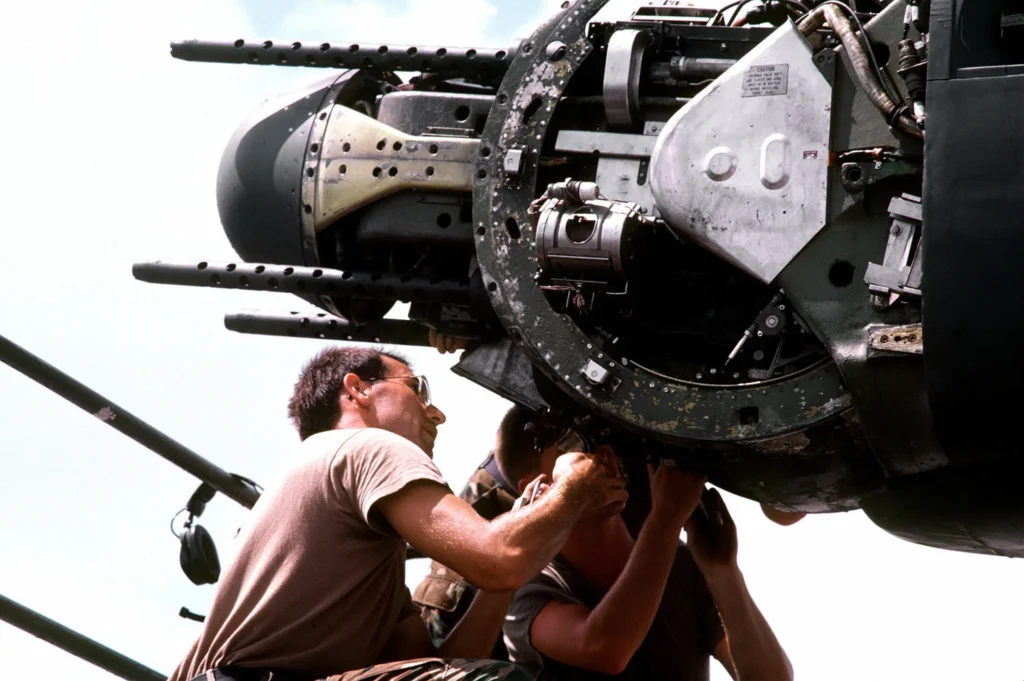
B-52s continued to play a vital role in bombing operations during the Gulf War in the 1990s. During Operation Enduring Freedom, B-52 crews provided ground troops in Afghanistan with close air support by deploying precision-guided munitions while also delivering at least a third of all bombs dropped by U.S. forces in the region. In Operation Iraqi Freedom, B-52s deployed AGM-86C Conventional Air-Launched Cruise missiles at targets from stand-off ranges, proving the bomber could be leveraged for far more than dropping bombs from directly over a target.
In September of 2021, the B-52 got another new lease on life in the form of a $2.6 billion Commercial Engine Replacement Program contract awarded to Rolls-Royce to replace its 1960s-era TF33 engines with new F130s that will keep it flying into the 2050s – meaning the B-52 will likely still be in service more than a hundred years after its first flight.
Related: The B-52 Bomber is getting more advanced radar than Russia’s Su-35 fighter
Boeing’s original B-52 was shot down by a colonel
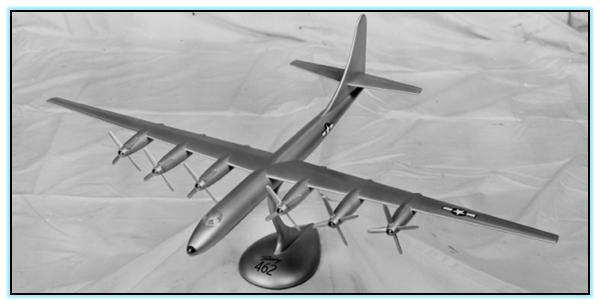
In July of 1948, Boeing received a contract from the still-new U.S. Air Force to design and build a new heavy bomber. While the first jet fighter had entered service three years prior, the Lockheed P-80 Shooting Star, turbojet engines were still in their infancy at the time. While powerful enough to propel the P-80 to nearly 600 miles per hour and altitudes of nearly 47,000 feet, these fuel-hungry engines weren’t yet considered feasible for long-range bomber applications.
So when Boeing’s three-man presentation team arrived at Wright Field Air Force Base on October 21, 1948, they brought designs for a straight-wing bomber powered by four turbo-prop engines reminiscent of World War II platforms like the B-29 Stratofortress. But when Boeing’s chief of Aerodynamics, George Schairer, showed their designs to the Air Force’s chief of bomber development, Col. Pete Warden, the colonel wasn’t impressed.
Technically speaking, Warden didn’t really have the authority to tell the Boeing team to scrap their turbo-prop bomber design. However, he was also aware that despite some resistance within the Air Force at large, heavy-hitting generals like the legendary Curtis LeMay (then commander of the Strategic Air Command) and Kenneth Bonner Wolfe at the Air Material Command believed that swept-wing jet bombers were the future. Warden was inclined to agree.
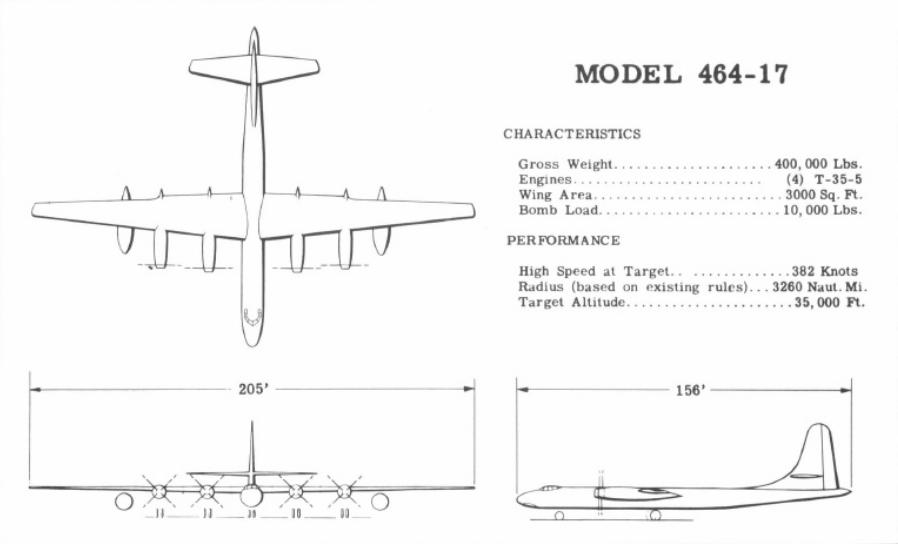
Warden suggested to the Boeing team that they do away with their design and come back to him with a new one that included turbojet engines. From a design perspective, he was effectively asking Schairer to start from scratch. In a stroke of luck for Boeing, and unbeknownst to Warden at the time, Schairer happened to be carrying some work he’d already done on the possibility of a jet-powered bomber in his briefcase, giving him just enough of a foundation to think a redesign might be possible.
So Schairer hopped on the phone with Ed Wells, Boeing’s vice president of Engineering, to relay Warden’s request. Wells hopped on a flight and arrived in Dayton that evening, joining Schairer and engineers Art Carlsen and Vaughn Blumenthal at the Hotel.
The four men dove into the early data Schairier had on hand and quickly redesigned the B-52 to incorporate turbojet engines into an otherwise largely unchanged, straight-winged aircraft. The next morning, which happened to be a Friday, the Boeing team returned with their newly jet-powered B-52 design, only to find that Warden remained unimpressed.
“I don’t think you’ve gone far enough,” Warden told the team.
“Let’s see what we can do,” Wells told the colonel at noon on Friday. “We’ll be back Monday morning.”
Related: New footage shows B-21 Raider’s historic first flight
Changing history in a Dayton Weekend
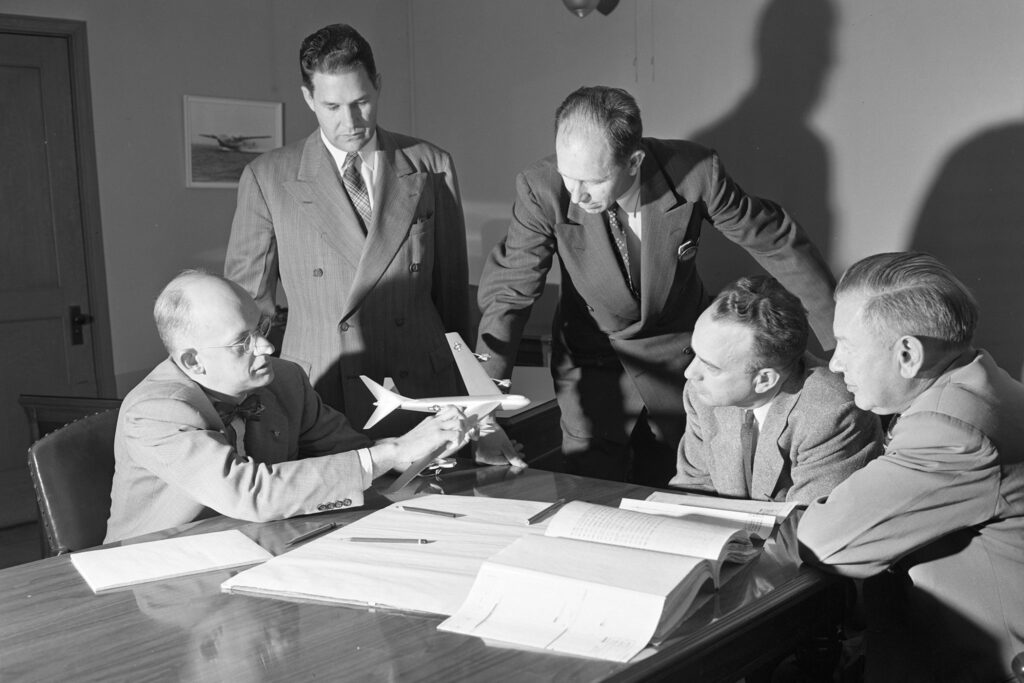
Fortunately for the design team, Boeing had two more top designers in Dayton on other business that week: Bob Withington, who played a role in the swept-wing design leveraged by the B-47, and Maynard Pennell, who was the assistant manager of the history-making B-29 program. The two soon joined Schairer, Wells, Carlsen, and Blumenthal in the increasingly cramped hotel room, pouring over sketches and quickly-scribbled mathematical computations. Computers wouldn’t become a common facet of aviation design for decades to come. It was up to these six men and their witts to design an entirely new bomber… and they had just 48 hours to do it.
By late Friday night, the new B-52 bomber was already coming into focus. This aircraft carried a massive 185-foot wingspan, swept back from the fuselage at a 35-degree angle. Adorning those massive wings in place of the four turboprop engines originally intended were eight new turbojets.
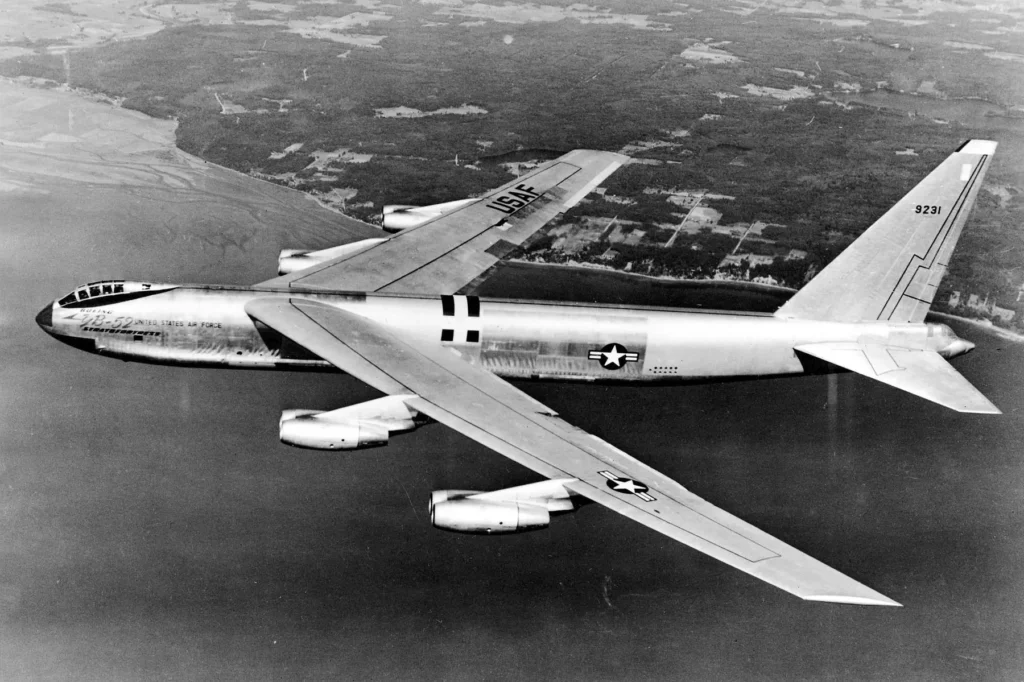
The next morning, Schairer left the stuffy hotel room to visit a local hobby shop. He picked up some balsa wood, glue, carving tools, and silver paint while Wells buckled down to begin the legitimate aircraft design drawings. The rest of the crew was left to wrestle with calculations to assess the aircraft’s weight and projected performance.
By Sunday, the team had compiled a full proposal that they turned over to a local stenographer to type up a clean copy. By Monday morning, they arrived back in Warden’s office with not only a fully-realized 33-page B-52 proposal but a silver, hand-crafted, 14-inch model of the bomber itself. Warden immediately took to the weekend design.
“Now we have an airplane,” he said. “This is the B-52.”
Just four years later, the first B-52 would take to the skies… looking almost exactly like the small model and collection of drawings Boeing’s legendary team had assembled over just 48 hours in a historic Hotel Van Cleve in Dayton, Ohio.
Editor’s Note: This article was originally published in September 2022.
Feature Image: A collage of the B-52 design team with B-52 aircraft. (Sandboxx News with Creative Commons assets)
Read more from Sandboxx News
- Russia has been trying a tactic of ‘a thousand cuts’ in Ukraine
- ST Idaho: The Special Forces team that vanished in the jungle
- Why the Navy never put the F-22 on aircraft carriers
- Israeli Patriot air defense systems operate in Ukraine, according to Zelensky
- Preparing to foil a possible highjacking in Miami with the Delta Force
Related Posts
Sandboxx News Merch
-

‘Kinetic Diplomacy’ Bumper Sticker (White)
$8.00 Add to cart -

F-35 ‘Evolution’ Framed Poster
$45.00 – $111.00Price range: $45.00 through $111.00 Select options This product has multiple variants. The options may be chosen on the product page -

A-10 ‘Warthog’ Poster
$22.00 – $28.00Price range: $22.00 through $28.00 Select options This product has multiple variants. The options may be chosen on the product page

Alex Hollings
Alex Hollings is a writer, dad, and Marine veteran.
Related to: Airpower, Military History
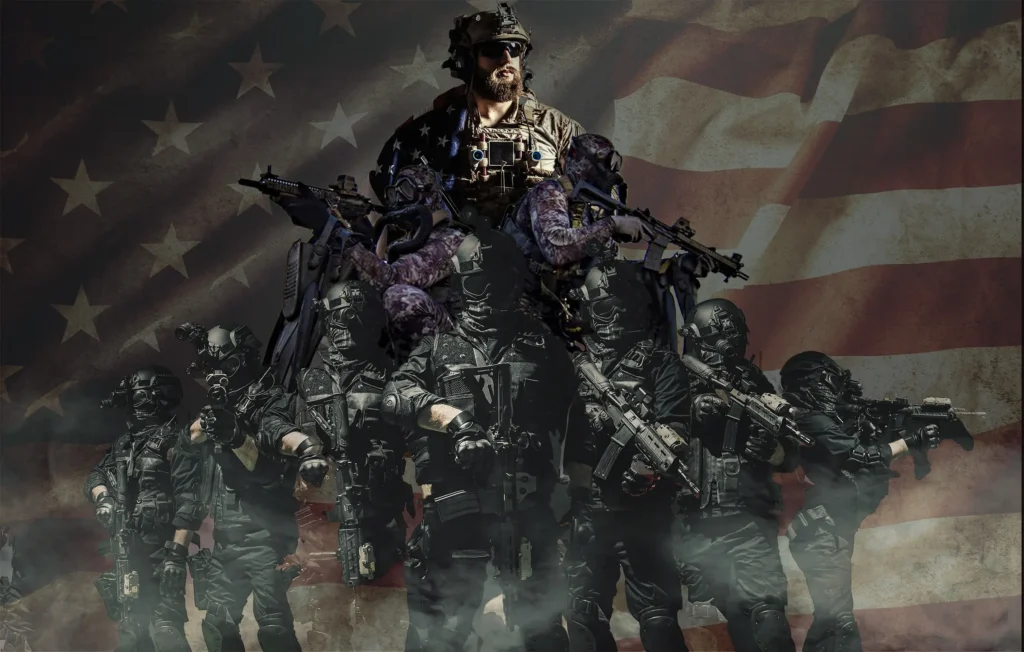
The social hierarchy of US special operations units
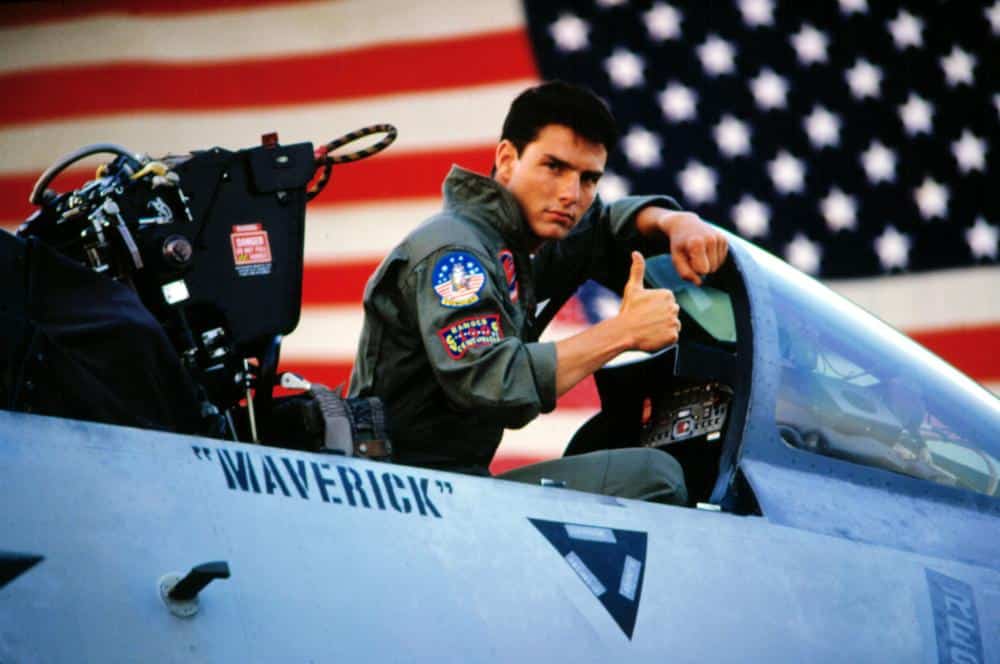
The 2 biggest lies ‘Top Gun’ taught you about military aviation

Air Force awards contract for its Next-Generation Penetrator bunker-buster bomb
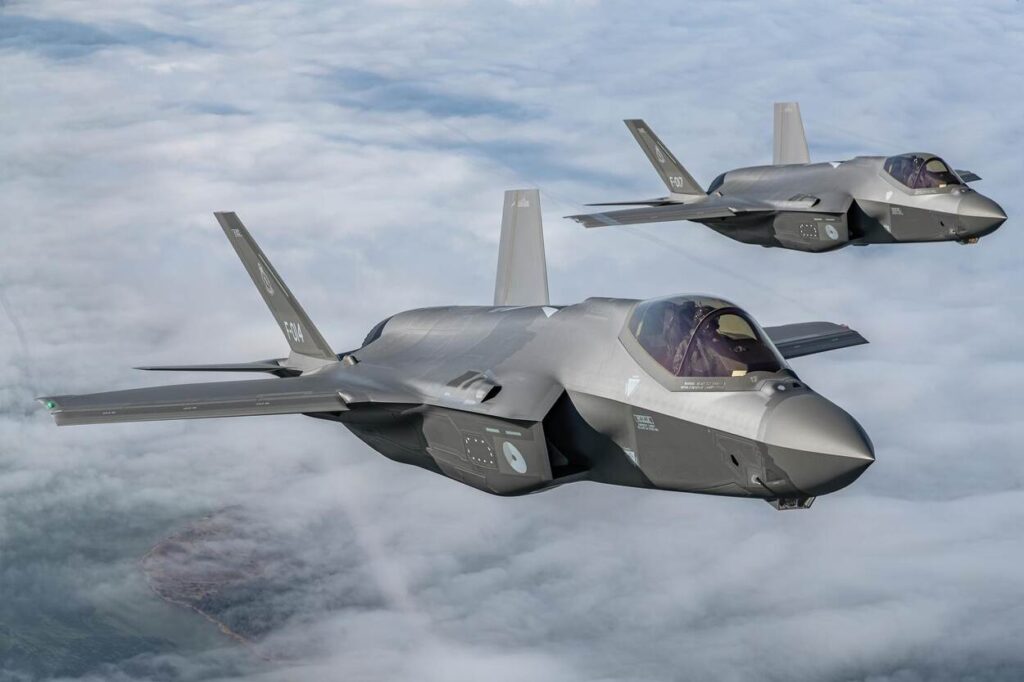
NATO shoots down Russian drones over Poland marking a first for the alliance
Sandboxx News
-

‘Sandboxx News’ Trucker Cap
$27.00 Select options This product has multiple variants. The options may be chosen on the product page -

‘AirPower’ Classic Hoodie
$46.00 – $48.00Price range: $46.00 through $48.00 Select options This product has multiple variants. The options may be chosen on the product page -

‘AirPower’ Golf Rope Hat
$31.00 Select options This product has multiple variants. The options may be chosen on the product page -

‘Sandboxx News’ Dad Hat
$27.00 Select options This product has multiple variants. The options may be chosen on the product page
